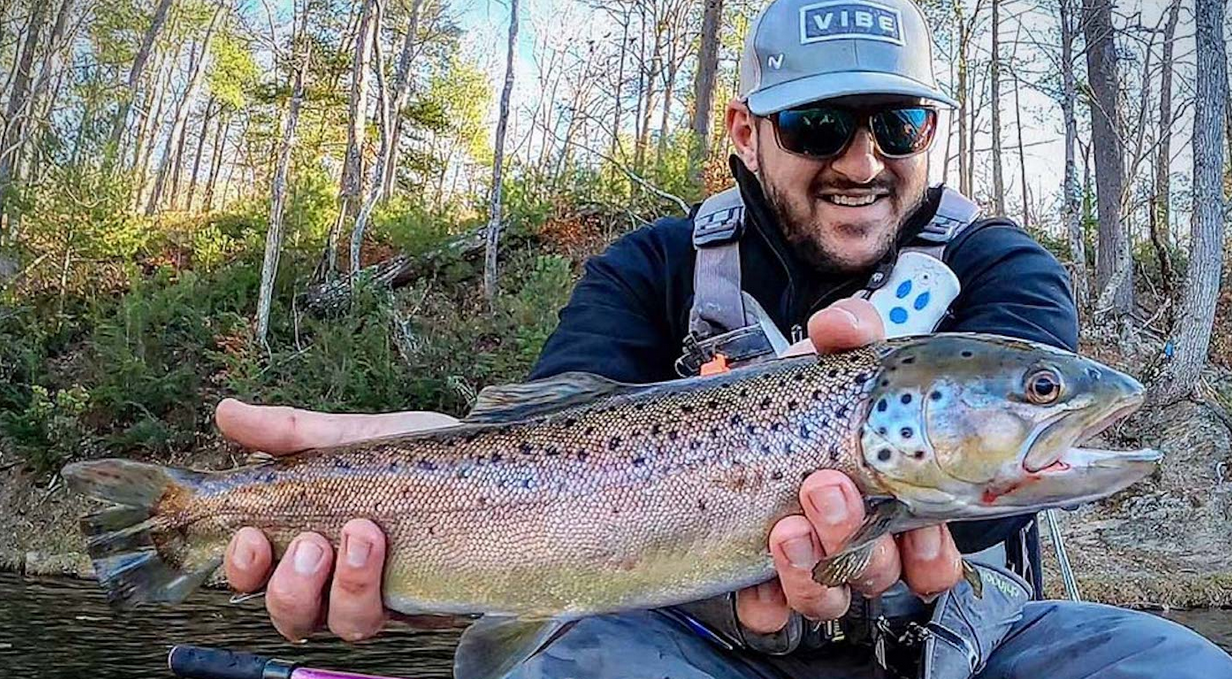To catch trout, you need to use a trout-specific lure. If you do not, then catching a trout will be the last thing on your mind! Trout are beautiful fish. Their coloring alone makes them special. They have colors of blue and green, silver and gold appearing at random patches on their sides. The colors are usually reflective of the environment in which they live. For example, if they live by the river or water bodies where reeds, shrimps, and insects border, you can expect them to have light colors reflecting those surroundings.
Size Matters
When it comes to trout, the size of your lure matters; you can’t just throw any old thing out there and expect to catch those beauties. They’re picky, so you’ll need a lure that’s just right for them. What kind of lure should you use? It’s all about the size. Trout-like lures that are between 1/8 and 3/8 inches long. Make sure it’s at least 2 inches long (or as long as possible). If you’re using a jig or spinner bait, ensure it’s at least 1/4 inch in diameter. And when using a fly or worm? The best way to know if your lure is the right size for trout is by observing how they react when they bite into it. If they take off with the bait without much effort on your part (meaning: no fighting), then you’ve got yourself a winner!
No Lure Is Perfect
No lure is perfect—that’s just the way of things. But we’ve got you covered if you’re looking for a lure that will catch trout. First off, let’s talk about live bait. Many people think that live bait is the best way to catch trout because it looks like what they eat in nature, but the truth is that live bait can be difficult to use and sometimes cause more trouble than it’s worth. Live bait may be a good option if you’re fishing in clear water and have an easy time seeing your hook. Otherwise, we’d recommend going with artificial lures instead.
Artificial lures are much easier to use than live bait because they don’t require as much attention from the fisherman or fisherman’s assistant (if applicable). You can also control how much movement there is on your line by adjusting how much line is out there—something that isn’t possible when using living creatures as bait. Plus, if you’re using a bobber with your artificial lure, you’ll be able to see when it hits bottom without having to lift your line every few minutes, like with live bait!
The Color Of Your Lure Matters
The color of your lure is one of the most important things to consider when fishing for trout. This is because trout have very sensitive eyes and can see colors in the ultraviolet spectrum. This means that they can see colors that humans can’t, so if you’re using a lure with colors humans can’t see, then it won’t work as well for catching them.
One of the best ways to figure out what colors are visible to trout is by looking at what kind of food they like. For example, if you catch a lot of insects on your hook, you might want to use something that looks like an insect when you’re fishing with lures. You can also use this information when choosing bait—if you want to use worms or other small animals as bait, then try tying them onto your hook with fishing line or threading them through holes in the middle of larger lures so that they look like larvae or eggs (which would be more appealing).
Suppose you’re having trouble figuring out what colors are visible to trout. In that case, there are other ways to figure this out—you can look at pictures online and see if anything stands out as particularly colorful or interesting-looking, or take pictures of objects around your house.
Presentation Is Everything
Presentation is everything when it comes to fishing. Presenting your lure can make or break your chances of catching a fish. When it comes to trout, you want a lure with a lot of action but not so much that it looks like an unnatural object floating in the water. You also want one that doesn’t look like it could hurt anything if it gets snagged on something—you don’t want to scare away any potential prey.
So what kind of lures should you use when you’re trying to catch trout? Lures with a lot of movement are good options for trout fishing, but they can be hard to master if you’re starting. If you have trouble getting the hang of using these types of lures, try something else instead. If you’re looking for an easy way to get started with trout fishing, consider using spinners or spoons instead. Spinners will be more effective in deeper waters because they can sink deeper than other lures. Spoons are excellent at mimicking insects like mayflies and caddisflies and will often attract fish because they look like food!
Trout-specific lure
To catch trout, you need to use a trout-specific lure. Trout are generally shy and cautious fish, so your lures must mimic the food sources they naturally consume in their environment. Trout have a wide range of food preferences, so your best bet is to choose a lure that matches what you know about their diet.
If you’re fishing in an area with many insects, like flies and mayflies, a fly-fishing lure may be best for you. You’ll also want to ensure that your lure is the right size and color—most fly-fishing lures are made with smaller hooks than other types of lures because they need to fit through the eye socket on a fly. Additionally, suppose there’s any doubt about what kind of insects might be present in an area (such as whether there are any pheromone attractants). In that case, it’s best not to use anything until you’ve identified exactly what insects will be around for certain.
If there aren’t many insects but plenty of baitfish near shoreline areas or bottom structures (like rocks), then baitfish-style lures would be the best option.



